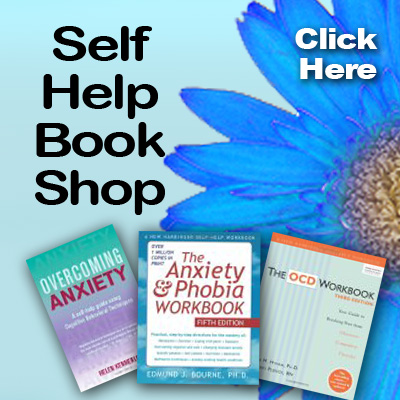Anxiety - What is a panic attack?
A panic attack will usually start suddenly and they are defined as having a relatively ‘brief duration’ usually reaching a peak at around 10minutes, however some sufferers have experienced Panic Attacks that last beyond 30 minutes. Longer durations of panic have been debated as to whether they are one attack or a series ofattacks, or indeed an attack followed by a long lasting sense of fear after the initial attack is over.
Experiencing a panic attack can be terrifying, it is sudden and all consuming, the physical symptoms can be shocking, and many who experience a panic attack for the first time can believe they are having a heart attack or ‘going mad’. The fact is neither of these assumptions is true, and although extremely scary a panic attack cannot kill you or send you ‘mad’. One of the first things that can take the fear out of Panic Attacks is to understand what they are; panic attacks come from our bodies own protective response to danger and are, in essence, a mechanism designed to protect us, and not as it feels, destroy us.
Our bodies are designed to respond to danger; we have an inbuilt defense mechanism known as the ‘Fight or Flight Response' response’, which triggers psychological and physical changes in our bodies. The release of chemicals can give very real physical symptoms such as rapid heart rate and breathing. These symptoms are designed to give us the ability to ‘fight or flee’ a specific danger, however a panic attack sufferer can feel these feelings intensified and with no present danger.
The Flight or Fight response
This sudden burst of adrenaline (and other chemicals – please see ‘Fight or Flight Response Explained), the increased oxygen and heart rate, gives our bodies increased abilities and sensory perception – which if you need to flee a wild beast or save your family from a burning building will indeed be used to maximum effect. If however you are simply doing your grocery shopping, taking your child to school, or sat watching TV for example, these frightening feelings can be extremely difficult to cope with or explain.
If there is no need to use the excess chemicals; adrenaline or the increased oxygen supply, then our bodies begin to act against us, the decreased carbon dioxide levels in our lungs and blood causes us to feel dizzy and disoriented, we can begin to hyperventilate and a Panic Attack can ensue.
Symptoms of Panic Attacks
The DSM-IV Diagnostic Criteria for a Panic Attack is outlined below. Please note everyone will respond to anxiety differently and any symptoms should be discussed with your GP.
A panic attack is a period of intense fear or discomfort, in which four (or more) of the following symptoms developed abruptly and have reached a peak within 10 minutes:
• Palpitations, or accelerated heart rate
• Sweating
• Trembling or shaking
• Sensation of shortness of breath or smothering
• Feeling of choking
• Chest pain or discomfort
• Nausea or abdominal distress
• Feeling dizzy, unsteady, lightheaded, or faint
• De-realization (feelings of unreality) or depersonalization (being detached from oneself)
• Fear of losing control or going insane
• Sense of impending death
• Paresthesias (numbness or tingling sensations)
• Chills or hot flashes
Other symptoms that have been expressed and debated as to whether they should appear are as follows:
• Tinnitus (buzzing in the ears)
• Neck soreness/stiffness/aching
• Headache
• Uncontrollable screaming or crying
Please see our page on Anxiety Symptoms for more on the symptoms associated with general anxiety.
Panic Attack Triggers
A panic attack may or may not have a recognizable trigger. Panic attacks are common in those with a phobia or extreme fear of a specific thing. For example those with arachnophobia may experience a panic attack if a spider is found in their home, this is as explained above the over heightened ‘flight or fight’ response kicking in when the person perceives a danger or threat.
However panic attacks often seem random and appear ‘out of the blue’. Often sufferers will frantically search for a cause and try and tailor their lives to avoid a reoccurring attack.
There are factors that contribute to panic disorder and we can see some of the many the varying causes below:
Biological Triggers:
We inherit biological characteristics from our parents. Research would suggest that we also inherit some psychological characteristics as well. Psychologists debated for many years whether our personalities were mainly inherited or developed through our life experiences. The current thinking is that it is a bit of both. We are born with some innate qualities which are shaped by the culture, society and century we are born into.
Life Experience Triggers:
1. Infancy and Early Childhood
Children learn from those around them, particularly those that they are emotionally close to and spend time with. They will look to the adults around them for clues how to respond to something. Adults can help children regulate their emotions by helping them understand what is upsetting them and, through their actions, showing them how to sooth themselves, for example, if they are anxious or upset. The way that adults respond to situations is important. If a child sees the adults closest to them fearful of specific situations then it is likely that they will also become fearful of them
2. Relationship Security
Experiences within the family, with friends and at school all have importance in building self-esteem and confidence and, particularly where anxiety is concerned, a sense of security and autonomy.
3. Life Experiences
Whether they occur in childhood or adulthood, specific experiences will shape our attitudes towards certain situations. Where something bad happens the first time we do it, e.g. we crash the car the first time we drive, will bias our perception of risk towards the high end. Again, how we respond to these experiences will shape our overall response to danger and our perception of our ability to cope. For example, the more we learn we are able to cope with bad things happening to us, the less anxious we will be about what happens. Conversely, if we have not been able to cope with something bad happening (e.g. when our boyfriend left us, we went to pieces and were off work for two months) then that could lead to us becoming more fearful about what might happen in the future.
Physical Cause and Factors of Panic attacks

It is a misconception thet panic attacks are ‘all in your head’, they are infact very physical phenomenons, they produce physical symptoms and often have physical triggers or factors.
When dealing with panic attacks we must not look only at the psychological causes, but at the whole person. Uncovered magazine does this by including ways we can take care of our physical health through diet (specifically built for wellness of mind), sleep and physical fitness.
Physical factors or contributors to panic attacks can include:
• Blood sugar instability
Irregular or poor eating habits can create blood sugar level fluctuations, these can cause physical symptoms akin to the ‘fight or flight response’ in turn this can then trigger the response and a panic attack. Eat routinely and healthily to help prevent these swings. We have delicious recipes online and in every issue.
• Drugs
This could be antidepressants (especially if you are new to them), or other prescription medication that can cause this side-effect (please discuss any medication with your doctor.) Many illicit drugs can cause mood disturbances, paranoia and panic attacks, even cannabis, which many users think ‘chills’ them out can cause these symptoms. See our know the score feature in issue four.
Drug withdrawals can also produce similar feelings.
• Other Chemicals
Alcohol, caffine, even Monosodium Glutimate (MSG) and other dietry chemicals can cause anxiety symptoms. We suggest trying to cut out as many of these chemicals as possible and eat as natural a diet as possible.
• Dehydration
It is very important for body and mind to keep hydrated, dehydration can cause physical symptoms akin to panic and trigger attacks as your body interprets the lack of hydration as a ‘threat’.
• Breathing dysfunctions
Holding your breath or even over breathing (shallow and rapid breathing) can be involuntary at times of stress, these can be triggers for panic attacks. Try breathing in for four seconds watching your tummy rise as you breath deeply – then hold for four, then breath out for four. Repeat this until your breathing takes on a more natural and controlled rhythm.
• Sleep problems
Extreme tiredness, under or over sleeping, jet lag, night waking, sleep-walking and other sleep dysfunctions can cause panic attacks. See our top ten tips for a good nights sleep.
• Health Problems
Digestive problems and allergies can cause panic attacks, again as the body sees the allergen as a ‘threat’ it can produce the ‘fight or flight’ response. Chronic pain and fatigue can also lead to increased risk of panic attacks. S too can some medications for these health conditions – please see your GP for advice.
Panic Disorder
Unpredictable recurrent episodes of anxiety/panic attacks that result in the sufferer having elevated anxiety in between attacks; this can lead to behavioural changes and avoidance of situations that the sufferer perceives as dangerous or a ‘trigger’.
Coping with Anxiety/Panic Attacks
Please see our No More Panic page. Also a book called How to Stop Anxiety & Panic Attacks: A Simple Guide to using a specific set of Techniques to Stop Panic Attacks, Agoraphobia, Social Phobia, Fear of Driving or Flying and Stress may be useful to you.
Anxiety Help and Treatments
We have a programme available that is endorsed by medical and psychology experts, please see Overcoming Anxiety for our programme.
Anxiety can be treated in a variety of ways, your GP/healthcare provider may suggest trying one, or a combination of the following:
Talking Therapies
Some therapies that may be considered are:
· Counselling
· Psychotherapy
· Cognitive Behavioural Therapy (CBT)
· Applied Relaxation
· Group therapy
We discuss these in more detail on our Anxiety Treatment page.
Medication
Medications generally prescribed for anxiety include Selective Serotonin Reuptake Inhibitors (SSRIs) these include Fluoxetine, Citalopram and Sertraline, and Benzodiazepines. Sleeping tablets, tranquillisers and sedatives (including Benzodiazepines) may be used as a short-term solution, while SSRI’s may be longer-term.
Self-help
There are lots of ways you can help yourself reduce your anxiety. These can include:
· Learning to control symptoms
· Exercise
· Relaxation
· Breathing exercises
· Distraction techniques (for more see here)
· Assertiveness training
· Healthy Lifestyle (eating and sleeping well are very important)
· Communicating your problems
Please see our page on No More Panic for some great pro-active hints, tips and expert advice.
Helplines
SANEline is open every day of the year from 6pm to 11pm
0845 767 8000
Anxiety, Further Help
We hope you have found this information useful, please also see
What Is Anxiety
Fight or Flight
Anxiety Symptoms
Anxiety Disorders
Coping with Anxiety
Generalised Anxiety Disorder
Panic Attacks
No More Panic
Anxiety Treatment
Managing Stress
Anxiety and Debt
Social Anxiety
Work Related Stress
Anxiety and Substance Abuse






